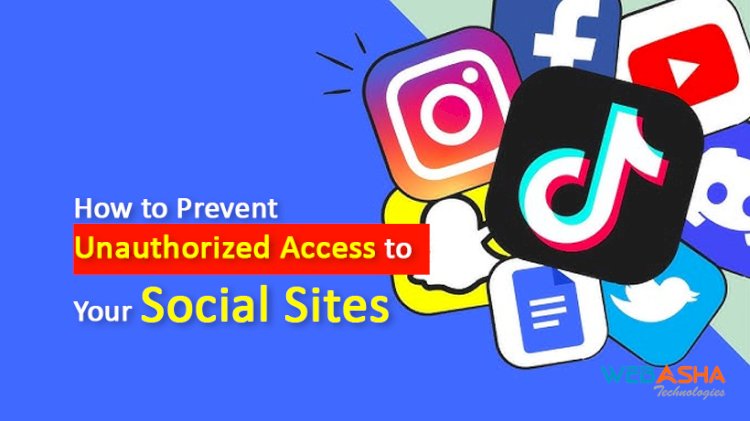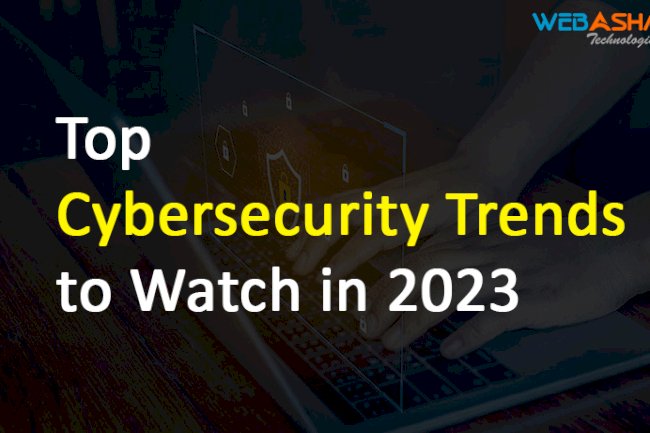How to Prevent Unauthorized Access to Your Social Sites
Discover a comprehensive guide to safeguarding your social media accounts from unauthorized access. Learn essential strategies and best practices to protect your online presence and personal information effectively.

In the ever-evolving digital landscape, our lives are increasingly intertwined with social media platforms. These platforms serve as avenues for self-expression, connection, and even business endeavors. However, with the convenience and benefits come potential risks, particularly concerning the security of our personal information and online presence. Unauthorized access to social media accounts can lead to identity theft, data breaches, and a host of other detrimental consequences. In this comprehensive guide, we'll delve into the strategies and best practices to prevent unauthorized access to your cherished social sites.
Understanding the Risks:
Before we delve into prevention strategies, it's essential to comprehend the risks associated with unauthorized access. Cybercriminals and hackers are constantly devising ingenious methods to infiltrate accounts, whether for malicious intent, financial gain, or simply wreaking havoc. From weak passwords to phishing scams, the avenues through which unauthorized access can occur are diverse and ever-evolving.
1. Employ Strong, Unique Passwords:
The foundation of your social media security lies in the strength of your passwords. A strong password is a combination of uppercase and lowercase letters, numbers, and special characters. Avoid easily guessable information like birthdays or names. Equally crucial is using unique passwords for each platform to prevent a domino effect in case of a breach.
2. Enable Two-Factor Authentication (2FA):
Two-factor authentication is a formidable defense against unauthorized access. By requiring an additional verification step beyond your password, such as a temporary code sent to your phone, even if someone has your password, they won't be able to gain access without the secondary authentication.
3. Regularly Update Your Passwords:
Frequently updating your passwords is a proactive measure against unauthorized access. Hackers often rely on outdated credentials to breach accounts. Set a schedule to change passwords across your social sites and ensure they remain resilient.
4. Beware of Phishing Attempts:
Phishing is a deceptive technique used by cybercriminals to trick users into revealing their credentials or sensitive information. Be cautious of unsolicited emails or messages that prompt you to click on links or provide personal details. Always verify the authenticity of the sender before taking any action.
5. Educate Yourself and Stay Informed:
Understanding the latest hacking techniques and security best practices is essential. Cybercriminals adapt quickly, making it imperative to stay ahead of the curve. Regularly educate yourself through reputable sources and platforms that offer insights into emerging threats.
6. Limit Third-Party Access:
While some third-party apps can enhance your social media experience, granting excessive permissions can jeopardize your security. Review the permissions you've granted to external apps and revoke access to those you no longer use or trust.
7. Strengthen Your Network Security:
Your Wi-Fi network can be a potential entry point for unauthorized access. Set a strong password for your network, enable WPA3 encryption, and regularly update your router's firmware to plug security vulnerabilities.
8. Be Cautious of Public Wi-Fi:
Avoid accessing your social media accounts on public Wi-Fi networks, which are often less secure and prone to interception. If you must access your accounts on the go, consider using a Virtual Private Network (VPN) to encrypt your connection.
9. Monitor Your Accounts Regularly:
Frequent monitoring of your social media accounts is crucial. Regularly review your posts, connections, and messages for any unusual activity. If you detect unauthorized access, change your password immediately and report the breach to the platform.
10. Secure Your Devices:
Ensure that the devices you use to access your social media accounts are secure. Set up a strong device password or biometric authentication, keep your operating system and apps updated, and install reputable antivirus and security software.
11. Regularly Update Apps and Software:
Outdated apps and software can harbor vulnerabilities that hackers exploit. Regularly update not only your social media apps but also your device's operating system and other software. Developers release updates to address security loopholes and improve overall protection.
12. Review Account Activity Logs:
Most social media platforms offer a feature to review recent login activity. Take advantage of this to track any suspicious login attempts or devices accessing your account. If you notice any unfamiliar activity, act promptly to secure your account.
13. Secure Your Email Account:
Your email account is often the gateway to your other online accounts. If a hacker gains access to your email, they can initiate password resets for your social media accounts. Ensure your email account is protected with a strong password, 2FA, and regular security checks.
14. Create Strong Security Questions:
Many platforms provide security questions as an additional layer of protection. Avoid using questions with easily guessable answers. Instead, create unique answers that only you would know, making it harder for hackers to bypass this security measure.
15. Be Careful with Security Answers:
When setting up security questions, refrain from using easily discoverable information, such as your mother's maiden name or the name of your first pet. Opt for answers that are known only to you and are not readily available online.
16. Use Biometric Authentication:
Modern smartphones and devices often offer biometric authentication methods such as fingerprint scans or facial recognition. Enable these features as they provide an extra layer of security, making it difficult for unauthorized users to gain access.
17. Log Out from Shared Devices:
If you've accessed your social media accounts from a shared or public computer, always log out once you're done. Failing to do so could allow the next user to access your account without needing your password.
18. Backup Your Data:
Regularly back up your social media data, including posts, photos, and contacts. In case of a security breach or account compromise, having a backup ensures you don't lose precious memories and can start afresh with minimal impact.
19. Avoid Auto-Login Features:
While convenient, auto-login features can be risky, especially if your device is lost or stolen. Disable auto-login and require manual entry of your credentials to access your social media accounts.
20. Establish Strong Email Security:
Secure the email account associated with your social media platforms with strong measures. Use a unique password, enable 2FA, and regularly monitor your email for suspicious activity.
21. Consider a Security Audit:
Perform a thorough security audit of your social media accounts periodically. Check for any unknown followers, unfamiliar posts, or suspicious activity. If you find any discrepancies, investigate and take appropriate action.
22. Think Before Clicking:
Exercise caution when clicking on links, even if they appear to be from trusted sources. Cybercriminals can create convincing imitations of legitimate websites to steal your login information. Always verify the URL and the source of the link.
Conclusion: Your Shield in the Digital Realm
In a world where social media has become an extension of our lives, securing our online presence is non-negotiable. By adhering to these expanded tips, you can create a formidable defense against unauthorized access to your social sites. Remember, proactive vigilance, education, and a commitment to staying updated are your strongest allies in this ongoing battle. By implementing these strategies, you can reap the rewards of social media without compromising your personal information and digital identity.














![Top 10 Ethical Hackers in the World [2025]](https://www.webasha.com/blog/uploads/images/202408/image_100x75_66c2f983c207b.webp)








